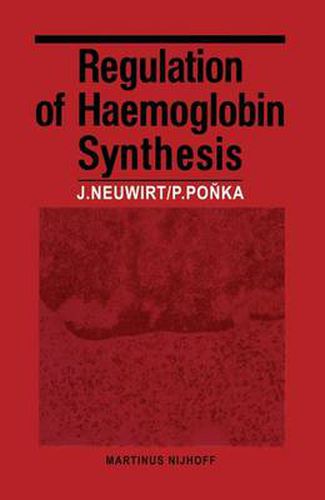Readings Newsletter
Become a Readings Member to make your shopping experience even easier.
Sign in or sign up for free!
You’re not far away from qualifying for FREE standard shipping within Australia
You’ve qualified for FREE standard shipping within Australia
The cart is loading…






This title is printed to order. This book may have been self-published. If so, we cannot guarantee the quality of the content. In the main most books will have gone through the editing process however some may not. We therefore suggest that you be aware of this before ordering this book. If in doubt check either the author or publisher’s details as we are unable to accept any returns unless they are faulty. Please contact us if you have any questions.
Haemoglobin is one of the most important molecules in the animal kingdom. Its function is to carry oxygen to tissues. In lower invertebrates the blood pigment is present in the haemolymph and is not bound in cells. Later in the course of phylo genesis haemoglobin remains associated with cells which produce it and in this form it reaches the peripheral circulation. In higher organisms the haemoglobin production is thus determined by two main factors: haemoglobin synthesis in erythroid cells and the formation of these erythroid cells which depends on cell proliferation in haematopoietic organs. Human haemoglobin is made up of two chains which combine from four different polypeptide chains formed in varying ratios in different periods of the life cycle. During the life span of humans the following haemoglobins are formed: embryonic haemoglobins Gower 1 and 2, foetal haemoglobin F and two adult haemoglobins A and A . E-and IX-chains are part of the embryonic haemoglobins Gower 1 (E4) and 2 Gower 2 (1X2E2). These haemoglobins predominate in embryos during the second month of pregnancy and at the end of the first trimester they are completely re placed by foetal haemoglobin F (~Y2). Adult haemoglobin A consists of two IX and two ~-chains and is the main component of red cells in adults. A relatively small component of red cells accounting for less than 2 % of the total haemo globin, is haemoglobin A2 (1X0).
$9.00 standard shipping within Australia
FREE standard shipping within Australia for orders over $100.00
Express & International shipping calculated at checkout
This title is printed to order. This book may have been self-published. If so, we cannot guarantee the quality of the content. In the main most books will have gone through the editing process however some may not. We therefore suggest that you be aware of this before ordering this book. If in doubt check either the author or publisher’s details as we are unable to accept any returns unless they are faulty. Please contact us if you have any questions.
Haemoglobin is one of the most important molecules in the animal kingdom. Its function is to carry oxygen to tissues. In lower invertebrates the blood pigment is present in the haemolymph and is not bound in cells. Later in the course of phylo genesis haemoglobin remains associated with cells which produce it and in this form it reaches the peripheral circulation. In higher organisms the haemoglobin production is thus determined by two main factors: haemoglobin synthesis in erythroid cells and the formation of these erythroid cells which depends on cell proliferation in haematopoietic organs. Human haemoglobin is made up of two chains which combine from four different polypeptide chains formed in varying ratios in different periods of the life cycle. During the life span of humans the following haemoglobins are formed: embryonic haemoglobins Gower 1 and 2, foetal haemoglobin F and two adult haemoglobins A and A . E-and IX-chains are part of the embryonic haemoglobins Gower 1 (E4) and 2 Gower 2 (1X2E2). These haemoglobins predominate in embryos during the second month of pregnancy and at the end of the first trimester they are completely re placed by foetal haemoglobin F (~Y2). Adult haemoglobin A consists of two IX and two ~-chains and is the main component of red cells in adults. A relatively small component of red cells accounting for less than 2 % of the total haemo globin, is haemoglobin A2 (1X0).